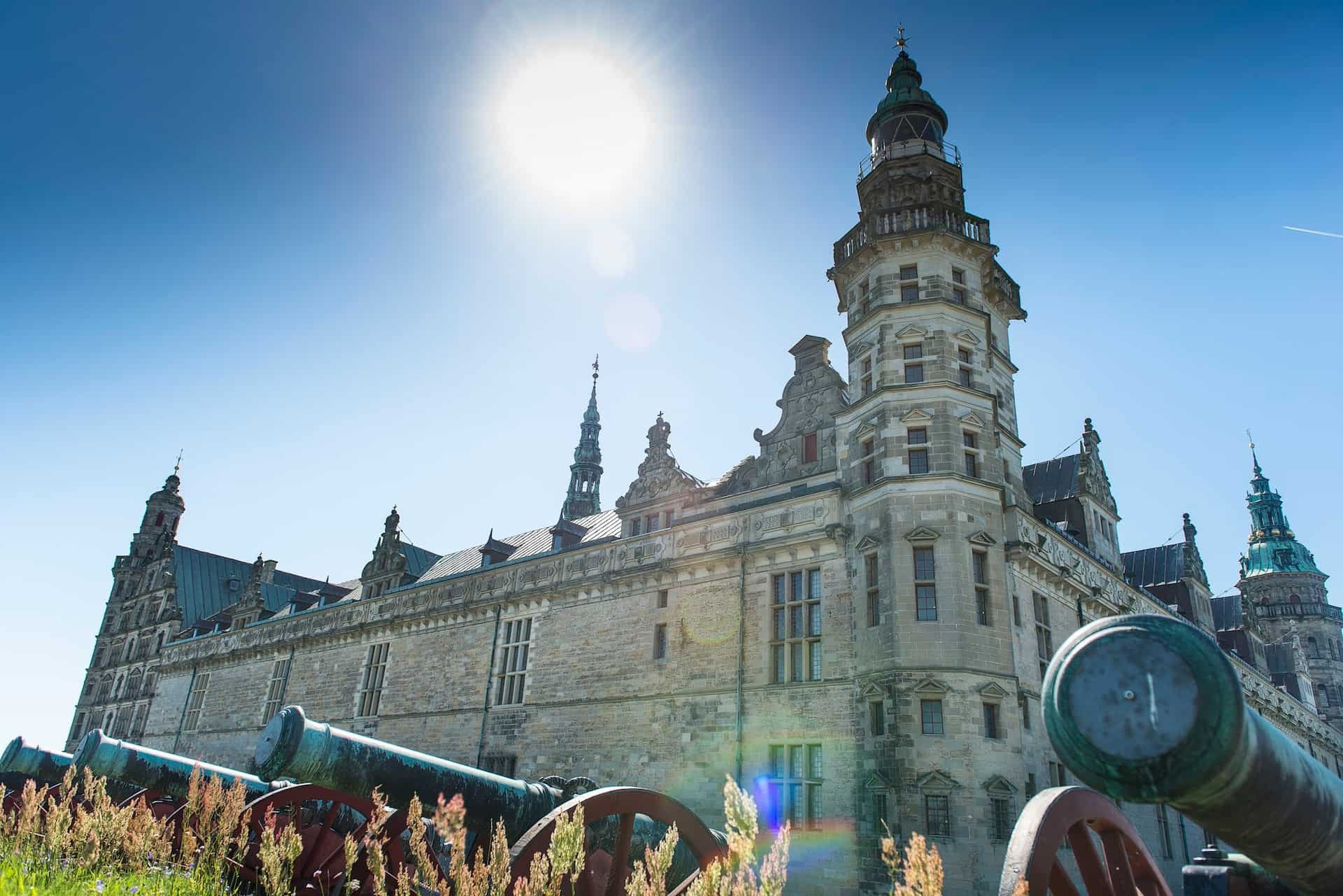Kronborg is a UNESCO World Heritage Site
Strategically located overlooking the Sound and Sweden, the bricks of Kronborg Castle hide hundreds of years of history that have been of great importance to the Kingdom of Denmark. Kronborg Castle is a UNESCO World Heritage Site - and you can read more about what this means on this page.
Kronborg's inscription on UNESCO's World Heritage List
In 2000, Kronborg Castle was inscribed on UNESCO's World Heritage List, partly because of the castle's history and important role over time, particularly in the 17th to 19th centuries.
Since Kronborg was built as a Renaissance castle in 1574, the foundations of the castle have remained intact, and when new buildings are added, they are built using the same old methods and techniques as 500 years ago.
Everything that is being built, both in and around Kronborg Castle, is thus according to the old traditions, which we today make every effort to preserve, just as it has been done for countless generations before us who look after the castle today.
What is the UNESCO World Heritage List?
UNESCO is an organization of the United Nations. The World Heritage Convention was adopted in 1972 to protect the world's cultural and natural heritage, which includes many sites around the globe that are considered inalienable to humanity.
This means that all sites inscribed on the UNESCO World Heritage List, including Kronborg Castle, must be protected and preserved - and that countries with sites on the list are obliged to do so.
The various sites designated as UNESCO World Heritage include natural areas, buildings and monuments, cultural landscapes, etc.
That is, very special and significant sites and attractions that are considered to be of great value. You can see the full UNESCO World Heritage List here.
Copenhagen is Capital of Architecture in 2023 - selected by UNESCO
In 2023, Copenhagen has been designated as the UNESCO Capital of Architecture - or as it is known in English: UNESCO World Capital of Architecture.
Copenhagen is only the second city in history to be so designated by UNESCO.
This year, there is a special focus on the UN's Sustainable Development Goals and sustainable architecture and construction, which is why Kronborg Castle is particularly interesting in this context with its unique and sustainable architecture.
You can read more about Copenhagen as Capital of Architecture and the many different events here.
One of the seven Danish attractions on the UNESCO World Heritage List
It's not easy to become a UNESCO World Heritage Site, and Denmark is proud to have seven UNESCO World Heritage Sites - most notably Kronborg Castle, which is beautifully preserved after hundreds of years of history and war hidden in the bricks.
Kronborg was destroyed by a terrible and violent fire in 1629, in which paintings, furniture and fixtures disappeared in the flames, and only the castle church survived. Christian IV restored and rebuilt the castle, and it stands today as one of Northern Europe's finest Renaissance castles.
It is known to the world as Hamlet's and Shakespeare's castle, as it is said to have inspired Shakespeare to use the castle in his play Hamlet from 1603. Read more about the history of Kronborg here.
Quiz on Kronborg and the UNESCO World Heritage List
Now you are an expert on one of the UNESCO World Heritage sites.
Can you answer these 5 questions?
When was Kronborg Castle inscribed on UNESCO's World Heritage List?
In which year was Copenhagen named UNESCO Capital of Architecture?
Which sites are usually designated as UNESCO World Heritage Sites?
How many attractions does Denmark have on the UNESCO World Heritage List?
What is Kronborg Castle also known as around the world?






